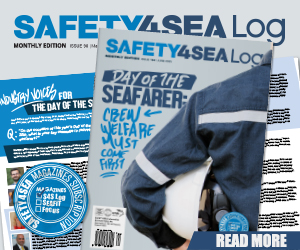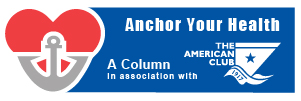In an exclusive interview to SAFETY4SEA, Sarah Barrett, Head of Product Insights, at Wärtsilä Voyage refers to the challenges the maritime industry faces on its decarbonisation journey and suggests ways to unlock the true benefits of digitalisation that can ensure success towards the sustainability journey.
‘’Digitalisation and data can have a significant positive impact on the sustainability of the maritime industry, and on the commerciality of your business’’ Mrs Barrett highlights.
SAFETY4SEA: What are the top priorities on your agenda for the maritime industry for the next five years?
Sarah Barrett: The single, most important challenge that our industry faces right now is decarbonisation. At Wärtsilä Voyage, we believe that the ongoing digitalisation of the industry will be an important part of solving this challenge – moving the dial towards a safer, smarter, more efficient and sustainable shipping industry. After all, it is estimated that by deploying digital technologies alone, the maritime industry could reduce emissions by up to 38% by 2050. It’s exactly for this reason that we are focused on helping maritime accelerate its digitalisation journey, realise improved operational efficiency, save time and money, and cut fuel use and GHG emissions. And we are doing this through delivering digital solutions that are helping connect, optimise, decarbonise and future-proof the maritime industry.
S4S:What are the key industry challenges up to 2030 from your perspective?
S.B.: There are four key industry challenges that I see facing maritime over the next few years:
- Firstly, shipping’s role in the global supply chain will continue to receive increased scrutiny when it comes to efficiencies, driven by consumer behaviour, investors and major shippers. Collaboration is needed to improve data interoperability and create shared standards for the benefit of the entire supply chain and to share in ESG reporting, as transparency continues to be a precious commodity.
- Secondly, the maritime industry will continue to face increasing pressure to balance environmental and regulatory goals with action that ensures the highest possible profit margin. Any action to decarbonise must also cut costs and deliver wider operational and commercial benefits.
- Thirdly, whilst great strides have been made in the industry’s digital maturity, many of the current digital solutions for maritime have been developed in silos. This has resulted in patchy and fragmented ecosystems on ships and on shore. Fixing this is a huge challenge for the industry. We are working to bridge the gaps – break the silos – between systems by building an ecosystem where digital technologies on board a ship talk to those in offices on shore, and where fleets are connected to the ports, too. This is vital if the industry is to operate smoothly, efficiently and sustainably.
- Finally, we cannot ignore the fact that the maritime industry faces an enormous skills shortage. One of the major concerns here is the competency of mariners in operating vessels, especially in light of the increasing pace of technology roll-out in the industry. Maritime needs to urgently look at how it closes this skills gap – whether that’s through investment in blend learning or looking at how it can better attract talent from outside of the immediate industry – so that it can continue to evolve and function, especially in the digital age.
S4S: They say that there is an opportunity in every challenge. Given the challenges that shipping is facing in way of decarbonization, what sort of opportunities do you identify?
S.B.: In today’s competitive maritime landscape, organisations are struggling to juggle environmental and regulatory goals with actions that ensures the highest possible profit margin. Digital technologies can be deployed in most vessels sailing today with very little to no downtime. Solutions that allow for more efficient fleet management, voyage planning or port operations can deliver reductions in emissions and uncover opportunities for sustainability today. Take the International Maritime Organization’s Carbon Intensity Indicator (IMO CII), for example. The commercial impact of a poor CII rating may be substantial. The IMO is encouraging port authorities, governments and other stakeholders to offer incentives for ships with major superior A or superior B ratings, meanwhile many charterers, cargo owners and end-customers are already demanding the use of less carbon-intense ships. This is where digital technology can truly highlight a ship or fleet’s profitability potential. Real-time visibility of a vessel’s preliminary CII rating based on operational data is invaluable, as are insights and tools that allow operators to optimise for CII performance over a voyage or series of voyages.
It’s also important to consider the commercial benefits that will come from an industry that works more closely together to overcome the decarbonisation challenge. Take data sharing as an example here. If the industry can break down data silos, ensuring that information can be used effectively by counterparties, be those cargo owners and charterers, ports or other actors in the global supply chain, then there will be more opportunities for individuals across maritime to make better fuel decisions to reduce emissions as well as make savings on the single largest cost for ship operators.
S4S: Technology and green transition: Is the pace fast enough? What is your wish list for the way forward?
S.B.: Shipping is arguably behind the curve in terms of its digital journey. Take the progress of digitalisation in aviation – plausibly the closest industry to shipping in terms of its asset-heavy nature, its critical role to the global economy and its safety and environmental challenges – to see a comparative sector that appears, on the surface, to be moving forward to an interconnected digital ecosystem more rapidly than the maritime industry is. However, the positive news is that the maritime industry’s digital transformation is accelerating and more people are waking up to the benefits that digitalisation and data can bring to their strategic and day-to-day decision making. Recognising that data is a powerful ally is a key step on this journey.
S4S: How will technology and data play a key role in helping the maritime industry comply with upcoming regulations?
S.B.: Taking a deep dive into the IMO’s CII regulations, digital technology is vital to effectively navigating CII ratings. The first step towards managing a fleet’s CII compliance effectively is having full visibility of how each vessel is performing right now. This helps ship owners pinpoint high-performing vessels, address vessels at risk or on the cusp of a superior CII grade, and outline the timeline of their fleets projected progression. Advanced digital technology can also then offer insights and optimisation options for achieving specific CII ratings. Insights ensure a ship owner properly understands the factors impacting their vessel’s CII, such as speed or route, meaning they can take targeted, data-driven optimisations for CII performance over a voyage or series of voyages.
S4S: How may industry stakeholders embrace more innovative solutions that will facilitate maritime’s digital transformation?
S.B.: In the last few years, the maritime industry has begun to truly recognise the benefits of digitalisation and how it can help organisations operate more safely, more efficiently and more sustainably. However, before maritime organisations can invest in new technologies, they need to test them on their own vessels and in scenarios that come as close as possible to real life. We expect this of every other industry, from cars and planes, to computers and phones – so why should ships be any different?
However, real-world testing is costly and time-consuming. Trialling new equipment almost always means testing it on a customer ship which can often bring with it a lot of obligations and questions about documentation, schedules, data ownership and compliance. This often results in excessive costs, waiting time and, at times, frustration. It’s why we invested in AHTI, an innovation vessel where customers can test our technologies, as well as our technology partners’ solutions in changeable real-life conditions. The aim is to shorten time-to-market, enable us to fail fast and innovate quicker, and compare and understand different technologies outside of controlled environments. Whether on AHTI or in similar environments, embracing innovative solutions requires the industry to work more closely together to shape the future of maritime. Collaboration is key to enabling us to move forward as an industry at pace.
S4S: If you could change one thing across the industry from your perspective, what this would be and why?
S.B.: I’d encourage more maritime companies to embrace digitalisation and data. This requires a paradigm shift that goes beyond simply deploying new technologies, but it’s the only way forward in today’s fast-paced, highly competitive global economy. Every digital transformation journey must start with people, because it’s the people working with the technologies and using the data who will truly make a difference. But for people to accept change, they must first understand the benefits that digitalisation and data can offer them. We know that for some people, this topic remains a mystery. This is what the Wärtsilä Voyage team would like to change in the industry. We recently developed a whitepaper outlining the benefits of data-driven decision making to try to demystify digitalisation.
S4S: In your view, has the industry been successful in enhancing its environmental performance? What should be the next steps?
S.B.: In recent years, the maritime sector has awoken to the pressing need to make critical sustainability improvements and rethink its activities by embracing technology and digitalisation. Whilst shipping has made important headways in its digital maturity, there is still more that needs to be done to reach the digitalisation utopia which we see becoming central to delivering against companies’ ambitious net zero strategies. With the right support and software platforms, digital optimisations and data-based decision-making will become the norm for efficient and compliant vessel operations. Once you start to connect the dots, you lay the groundwork for technologies that can have an even more profound future impact on efficiency, sustainability and safety, such as a highly automated ships, more advanced AI and machine learning. Data can do a lot for you right now, when and if it’s used properly. The road ahead is filled with opportunity and we’re only just getting started.
S4S: Do you have any new projects/plans that you would like to share with industry stakeholders?
S.B.: We recently developed an emissions module for our Fleet Optimisation Solution, which will support ship owners in navigating the latest emissions regulations, including the new International Maritime Organization CII rating. The module helps ship owners take targeted actions, helping them ensure their fleet’s compliance with CII. As a result of using the emissions module, owners can improve the competitiveness of their fleet on the charter market and extend the employment lifespan of their vessels.
S4S: What is your key message to industry stakeholders with regards to a more sustainable future for shipping?
S.B.: Digitalisation and data can have a significant positive impact on the sustainability of the maritime industry, and on the commerciality of your business. The key is in connecting the dots between your specific decarbonisation aims, the technology that best suits your needs, and the data you have access to. When you choose the right partner that can help you to connect those dots, you will unlock the true benefits of digitalisation right now, and start a digital journey that will drive sustainability into the future as well.
The views presented hereabove are only those of the author and do not necessarily reflect those of SAFETY4SEA and are for information sharing and discussion purposes only.































































